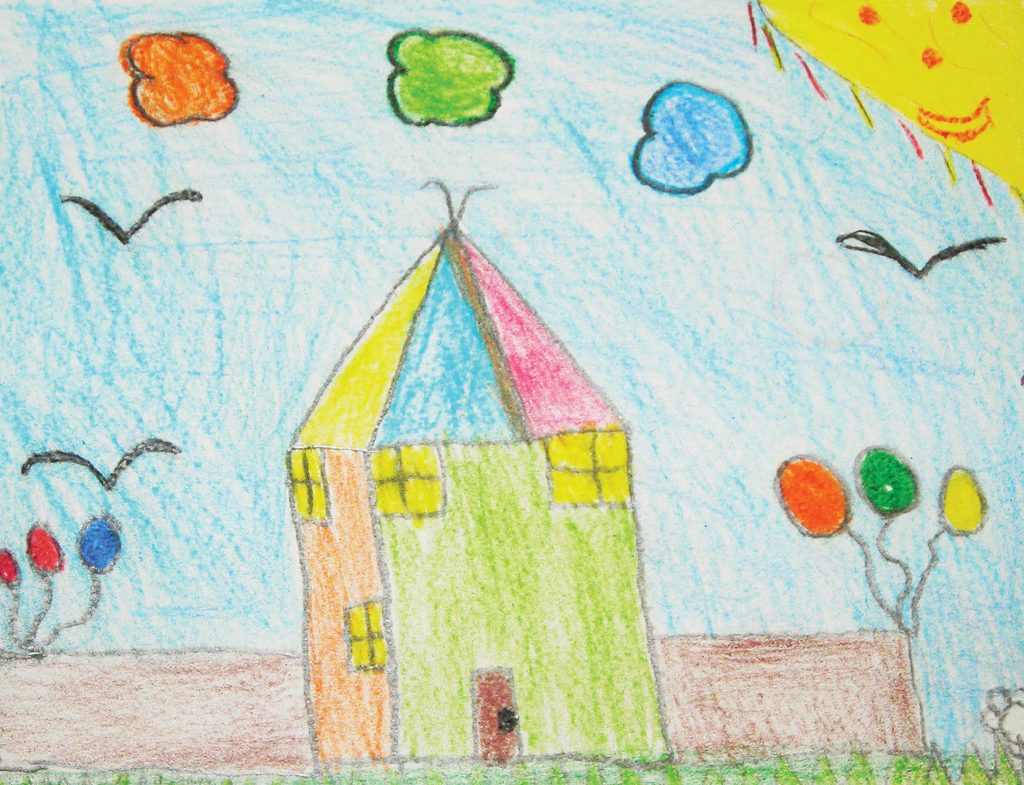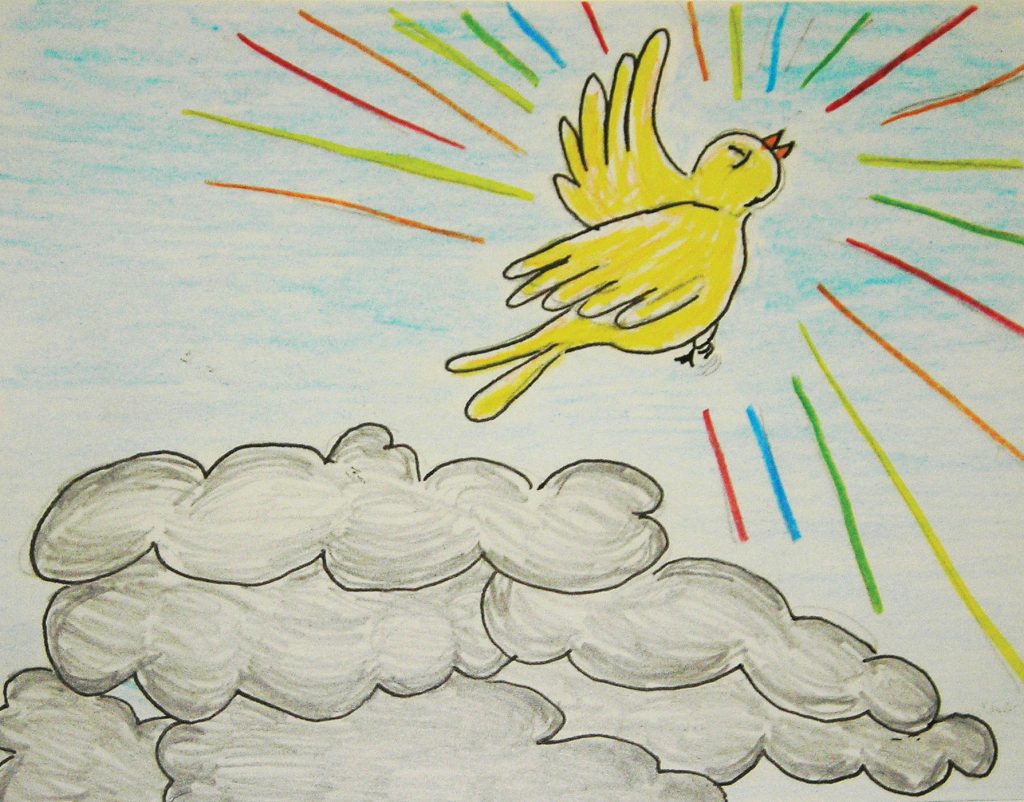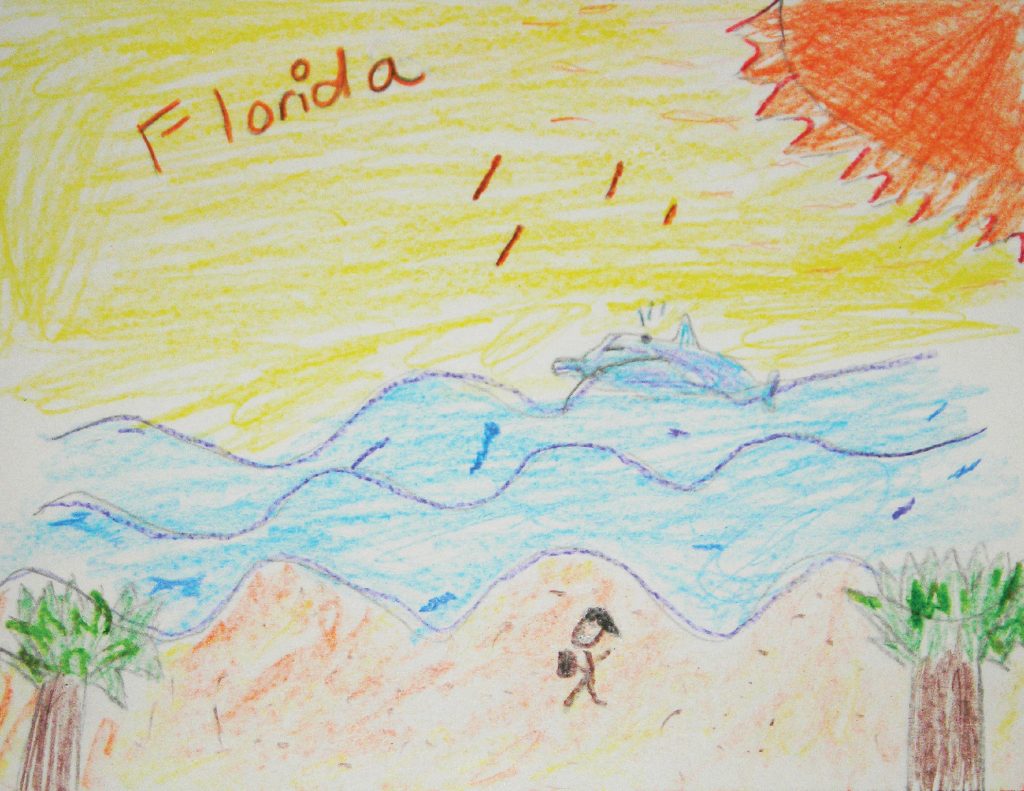This article was previously published in Canadian Teacher Magazine’s Nov/Dec 2010 issue.
Are you looking for an appealing project that integrates art and writing, and fosters a relationship with the community? Then this postcard project may work for your classroom and the community.
The goal of the project is for middle-grade students to develop an understanding of themselves and their community. In addition, the students will discover the similarities or differences between individual and collective interpretations of the theme of “hope,” and will gain a greater understanding of the role art can play in their lives. It allows students to design one-of-a-kind postcards and exchange them with a community organization. For example, the postcard swap could occur with art education majors at a local university or seniors at a nearby assisted living facility.
It is important to establish a timeline with the organization that your students are partnering with, and to establish when and how the postcard swap will occur. Everyone who creates a postcard should receive one.
 The Project
The Project
This postcard project was based on the idea that participation in the arts can strengthen community and build human capacity, and was guided by the essential question: What is your vision of hope for yourself and your community?
We began by asking the question: What does the word “hope” mean? The students were given a few minutes to reflect and write down their thoughts and ideas about “hope.” Other prompts included: What do you hope for yourself? What hope do you have for our community?
Next, the students folded a sheet of paper in half and wrote a list of things they hoped for themselves and the community. On the other half, they illustrated what they had written. This brainstorming activity was called “list it/sketch it.” After completing the list it/sketch it sheet, the students were asked to share their thoughts and sketches with others in the class.
Following the list it/sketch it sheet, the students viewed works of art that depict a vision of hope. These included Thomas Moran’s Grand Canyon of the Yellowstone, and Jacob Lawrence’s Migration Series, depicting African American migration to the north and their vision of hope for a better life. The works of art provided additional ideas for the students’ postcards.
Often postcards contain symbols that represent different locations, feelings, ideas and meanings. Some artists also use symbols in their works of art. This project provided the opportunity for the students to learn how artists communicate using symbols. For symbol examples, we introduced the students to First Nations symbols, hieroglyphs of ancient Egypt and contemporary artists, such as Keith Haring. The students were asked to think of ways in which they could create their vision of hope in a work of art. They were asked: What symbols can effectively communicate your ideas? The students brainstormed symbols on a piece of paper before beginning their postcards.
After the students discussed their symbols, we distributed a postcard size piece of blank cardstock to each student. The students used a variety of art materials and expressed their ideas of hope for themselves and/or for the community. In addition, the students wrote a message on the back of their postcard, which explained their images of hope.
 The Swap
The Swap
Once the postcards were completed, we collected and packaged them to be sent to the participating site to decrease the chance of a postcard being misplaced. The corresponding project partners’ postcards were given out, one to each student.
The teacher should prep the students to be respectful of everyone’s interpretation of hope. It is important to allow time to reflect on the message communicated through the postcard. The teacher may ask the following guiding questions: “What is their vision of hope?” and “What do you see that makes you think that?’’ Also, the students can discuss if the postcards they received communicated similar or different visions of hope, and different ways we might be able to achieve our visions of hope.
 Closure
Closure
Prior to the end of the postcard project, the students discussed if they felt art is a good way to communicate thoughts, feelings and visions. The students talked about what they learned from sharing their visions of hope and if/how the artwork of others helped them to understand and articulate their own vision of hope. We closed the project by asking the students: Did this collaborative art project help you feel connected to your community?
Learning Objectives
Students will:
- Share their own thoughts about hope with their classmates and the community.
- Write and illustrate an original postcard.
- Have a greater understanding of how visual artists communicate the idea of hope through works of art.
National Standards
(from the National Art Education Association, based in the US, with members including art educators from Canada and around the world)
- Students select media, techniques, and processes; analyze what makes them effective or not effective in communicating ideas; and reflect upon the effectiveness of their choices.
Materials
- Sketch paper
- Pencils
- Crayons
- Coloured pencils
- Fine black markers
- 5 ½” x 4 ¼” cardstock for postcards
- Prints of art depicting hope
- Variety of postcards
ABOUT THE AUTHORS
Donalyn Heise
Donalyn Heise, Ed.D is an associate professor of art education at the University of Memphis in Tennessee. Prior to teaching in higher education, Dr. Heise taught art at the elementary and secondary levels. dheise2@memphis.edu
Bryna Bobick
Bryna Bobick, Ed.D is an assistant professor of art education at the University of Memphis in Tennessee. Prior to teaching in higher education, Dr. Bobick taught at the elementary level. bbobick@memphis.edu
This article is from Canadian Teacher Magazine’s Spring 2020 issue.









